NEURODEGENERATIVE DISEASES
Remote patient diagnosis & consultation
To simplify the initial contact with our hospital for patients from abroad, we have prepared a remote two-stage process of prequalification for neurosurgical procedure. In the first stage, the patient sends via email all available medical documentation (lab results, treatment history, MRI scans) to be analyzed by our neurosurgical team. In second stage, we will arrange an on-line video consultation with one of our neurosurgeons. The cost of the online consultation is 200EUR. All necessary exams (e.g. CT, MR) and consultations will be repeated during the patient’s stay at Vital Medic Hospital. The final therapeutic decision will be based on neurosurgical exam and radiological results. At this point the final financial settlement may be presented to the patient. The neurosurgical treatment will be carried out according to the schedule determined by the team of specialists. We encourage you to use the email below or the contact form to begin your treatment.
Comprehensive and coordinated treatment
Comprehensive and coordinated treatment for brain and spine tumors takes place at the Brain and Spine Tumor Treatment Center, where we provide:
• Neurosurgical/neurological consultations – initial, to diagnose the disease
• Diagnostic tests appropriate for the initial diagnosis
• Qualification for surgical treatment
• Individually selected surgery with the use of advanced technology for planning and performing the procedure
• Individually planned perioperative and postoperative neurological rehabilitation
• Follow-up consultations for post-op control and continuation of the treatment
PROCEDURES
The effect of DBS on the symptoms of Huntington’s disease has been analyzed in more than twenty published scientific papers, so there is much less information available on the effectiveness of deep brain stimulation therapy for this condition than for Parkinson’s disease, dystonia or tremor, however avaiable scientific studies and clinical observations indicate that patients treated with DBS can achieve a satisfactory improvement in quality of life. The greatest benefit from deep brain stimulation therapy is gained by patients with significantly severe choreiform movements (in whom drug treatment options, including tetrabenazine, have been exhausted) while not presenting significant cognitive deterioration and psychotic symptoms (psychiatric and psychological evaluation is always necessary). In patients with Huntington’s disease treated with DBS, in addition to choreic movements, the severity of dystonic movements may also decrease and the severity of gait disturbances may decrease.
For neurostimulation of deep brain structures, we use Boston Scientific’s Vercise Genus rechargeable stimulator:
The Vercise Genus R16 stimulator is equipped with Cartesia 3D technology, a set of programming features that provide targeted therapy with less risk of side effects. It also makes it easier for the doctor to adjust and fine-tune the stimulation over time, so the patient can be sure to continue receiving the therapy they need. Because the battery can be recharged wirelessly for at least 15 years, several non-rechargeable pacemaker replacement procedures can be avoided during that time.
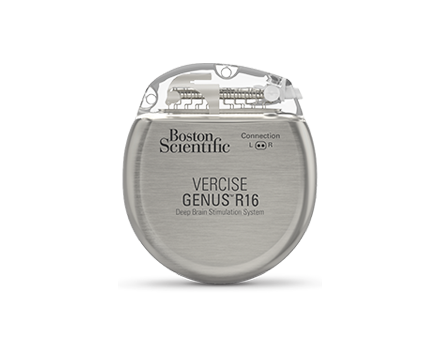
Features of the stimulator:
– Light weight and size of the device, the patient experiences less discomfort after implantation
– Battery life of at least 15 years, covered by warranty
– Wireless battery charging
– Bluetooth wireless remote control
– MR examination capability
– Constant-current stimulators
– With Cartesia 3D technology, Vercise DBS electrodes allow independent control and precise adjustment of stimulation size and shape, accurately targeting therapy and avoiding unwanted side effects
DBS in Parkinson’s disease is the most important therapeutic advance since levodopa. Like levodopa, it is only a symptomatic treatment, i.e. it does not slow the course and does not lead to a cure, however, patients’ quality of life and performance improve significantly.
The best therapeutic effect is achieved in patients with motor slowing (bradykinesia), including gait slowing and rigidity. In some patients (but not in every case) a significant reduction in the severity of tremor can be achieved. DBS custom does not eliminate balance disorders, swallowing problems, speech disorders and freezing of gait (freezing). The use of deep brain stimulation makes it possible to reduce doses of antiparkinsonian drugs and their associated side effects. Patients who have had motor symptoms of Parkinson’s disease for at least five years are eligible for the therapy. This is the time needed to avoid misdiagnosis of Parkinson’s disease and misclassification of patients with other causes of parkinsonism (DBS therapy for these conditions is ineffective).
The best candidates for DBS therapy for Parkinson’s disease are patients with:
– symptoms of Parkinson’s disease that interfere with daily activities
– in whom oral drug therapy options have been exhausted
– with motor fluctuations, i.e. variable severity of Parkinson’s disease symptoms dependent on levodopa action
– with intractable dyskinesias (that is, rapid dance-like involuntary movements with uncontrolled “throwing of the limbs”).
For neurostimulation of deep brain structures, we use Boston Scientific’s Vercise Genus rechargeable stimulator:
The Vercise Genus R16 stimulator is equipped with Cartesia 3D technology, a set of programming features that provide targeted therapy with less risk of side effects. It also makes it easier for the doctor to adjust and fine-tune the stimulation over time, so the patient can be sure to continue receiving the therapy they need. Because the battery can be recharged wirelessly for at least 15 years, several non-rechargeable pacemaker replacement procedures can be avoided during that time.

Features of the stimulator:
– Light weight and size of the device, the patient experiences less discomfort after implantation
– Battery life of at least 15 years, covered by warranty
– Wireless battery charging
– Bluetooth wireless remote control
– MR examination capability
– Constant-current stimulators
– With Cartesia 3D technology, Vercise DBS electrodes allow independent control and precise adjustment of stimulation size and shape, accurately targeting therapy and avoiding unwanted side effects
Deep brain stimulation DBS is considered the most effective therapy for treating generalized dystonias where:
– there are no other neurological symptoms besides dystonic movements, the cause of dystonia is unknown (damage to the brain structure by magnetic resonance imaging examination is excluded)
– the genetic background is known: DYT1/DYT-TOR1A, DYT6/DYT-THAP1
DBS therapy should be considered in children with persistent dystonia when there is a risk of skeletal deformity, impaired bone growth (DBS can prevent this process, but not reverse it).
DBS treatment can significantly reduce the severity of symptoms:
– in cases of cervical dystonia (torticollis) in adults, if therapy with oral medications and botulinum toxin injections is ineffective
– in patients with late persistent dyskinesias caused by taking (primarily) antipsychotic drugs (neuroleptics)
DBS therapy is usually not satisfactory for dystonic movements caused by cerebral palsy.
Treatment of dystonia with DBS regardless of the indication is only symptomatic. Dystonic movements may respond more slowly to stimulation than other movement disorders. It can take up to 3-12 months to achieve maximum benefit.
For neurostimulation of deep brain structures, we use Boston Scientific’s Vercise Genus rechargeable stimulator:
The Vercise Genus R16 stimulator is equipped with Cartesia 3D technology, a set of programming features that provide targeted therapy with less risk of side effects. It also makes it easier for the doctor to adjust and fine-tune the stimulation over time, so the patient can be sure to continue receiving the therapy they need. Because the battery can be recharged wirelessly for at least 15 years, several non-rechargeable pacemaker replacement procedures can be avoided during that time.

Features of the stimulator:
– Light weight and size of the device, the patient experiences less discomfort after implantation
– Battery life of at least 15 years, covered by warranty
– Wireless battery charging
– Bluetooth wireless remote control
– MR examination capability
– Constant-current stimulators
– With Cartesia 3D technology, Vercise DBS electrodes allow independent control and precise adjustment of stimulation size and shape, accurately targeting therapy and avoiding unwanted side effects
The main causes of tremor as an indication for DBS are spontaneous tremor and the tremor-like form of Parkinson’s disease (one in which tremor predominates and the other symptoms are much less severe). Deep brain stimulation can also be used as a form of symptomatic therapy, in other forms of tremor, such as kinetic tremor in the course of multiple sclerosis or red tremor (Holmes tremor). DBS is used for patients for whom pharmacological treatment options have been exhausted. The essence of this therapy is the complete elimination of the tremor or a significant reduction in its amplitude (it is not always possible to completely stop the tremor) improving daily functioning, performing activities that require precise movement and achieving greater comfort in social and social life. The therapeutic effect persists when the pacemaker’s pulse generator is turned on. DBS implantation is associated with a low (<15%) risk of speech (dysarthria), gait and ataxia. It is much lower with unilateral DBS implantation, and adverse symptoms are often reversible with changes in stimulation parameters.
For neurostimulation of deep brain structures, we use Boston Scientific’s Vercise Genus rechargeable stimulator:
The Vercise Genus R16 stimulator is equipped with Cartesia 3D technology, a set of programming features that provide targeted therapy with less risk of side effects. It also makes it easier for the doctor to adjust and fine-tune the stimulation over time, so the patient can be sure to continue receiving the therapy they need. Because the battery can be recharged wirelessly for at least 15 years, several non-rechargeable pacemaker replacement procedures can be avoided during that time.

Features of the stimulator:
– Light weight and size of the device, the patient experiences less discomfort after implantation
– Battery life of at least 15 years, covered by warranty
– Wireless battery charging
– Bluetooth wireless remote control
– MR examination capability
– Constant-current stimulators
– With Cartesia 3D technology, Vercise DBS electrodes allow independent control and precise adjustment of stimulation size and shape, accurately targeting therapy and avoiding unwanted side effects
NEUROSURGERY DEPARTMENT
CONTACT
Vital Medic
46-200 Kluczbork
Skłodowskiej-Curie st. 21
Poland, opolskie region
Contact to our patient service:
📱 +48 531 999 172
📱 +48 531 439 671
✉ neuro@vitalmedic.pl
MAIN EMAIL
PATIENT COORDINATOR
Paweł Respondek
📞 +48 531 999 172
✉ p.respondek@vitalmedic.pl
PATIENT CARER
Nicoletta Nicowska
📞 +48 531 439 671
✉ n.nicowska@vitalmedic.pl
LEAVE US MESSAGE
WE WILL GET BACK TO YOU
PERSONNEL
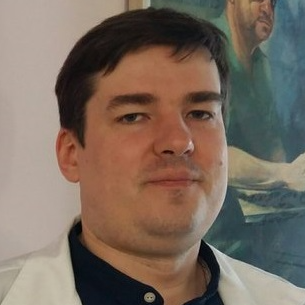
Witold Libionka, MD PhD
specialist in neurosurgery and neurotraumatology
Connected with neurosurgery since 1998, when he started his scientific activity and then, remaining a scholarship holder of the Ministry of Health, individual studies at the Department of Neurosurgery and Neurotraumatology of the Jagiellonian University Medical College. He continued his education at PhD studies at the Faculty of Medicine CMUJ in Krakow (2002-2006). During his specialisation in neurosurgery at the Department of Neurosurgery and Neurotraumatology of the Medical University of Krakow (2003-2010) he participated in numerous training courses to improve his professional qualifications (including Poland, USA, Germany, France). He completed a one-year research and clinical fellowship in functional and stereotactic neurosurgery at the Department of Neurosurgery, University of Rochester, USA.
Combining his professional and scientific work, he performs dozens of surgeries per month and participates in numerous research projects. He is the author or co-author of nearly a hundred publications and reports. His work on the mechanisms of action of deep brain stimulation has been awarded at national and international conferences and has been published in Nature Medicine and Nature Neuroscience.
He is an international consultant, teacher and lecturer in functional neurosurgery and oncology using functional mapping. He has expert experience in deep brain stimulation, spinal cord and peripheral nerve stimulation, intrathecal pump-assisted baclofen treatment, and resection of glial brain tumors in the eloquent area performed with intraoperative awakening and electrophysiological monitoring of speech, movement, vision, hearing, and tactile functions (more than a thousand such procedures performed in total).
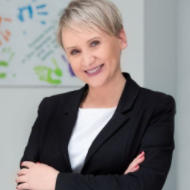
Anna Włodarczyk, Msc
psychologist, psychotherapist
- psychologist with clinical specialization, sexologist, psychotherapist
- certified instructor of addiction therapy. Graduate of the Warsaw School of Social Sciences and Humanities
- member of the Polish Psychological Association.
- court expert
- a participant of a specialized training for profilers of missing persons
- an expert of the Opole Province Headquarters of the State Fire Service in Opole in the area of widely understood psychological support
- implementer of preventive social campaigns, for which she was awarded the title “Man of the Year 2016 in the plebiscite of NTO”
- member of TSO, since 2006 closely associated with the State Fire Service as a Regional Rescue Specialist, in the field of psychological support for accident victims and firefighters
- trainer in the field of teamwork, team building, contact with victims, including the profiles of missing persons, debriefing and defusing
- handler of two dogs prepared for rescue work (with one she passed the exam of field specialty of class 0 of PSP)
- Psychologist in Vital Medic Hospital in Kluczbork
Professional interests: since the cooperation with the Vital Medic Hospital, neuropsychology comes to the fore (more on this soon) and associated with the love of dogs activity in the Foundation “Opolsar,” the unit specialized in the search for missing persons using rescue dogs.

Wojciech Fortuna, MD PhD
specialist in neurology
Professional experience:
- 2017-today – Department of Neurosurgery, Wroclaw Medical University – research and teaching fellow
- 2016-Today – Wrocław Walk Again Project – cell culture coordinator
- 2011-Today – Akson – Department of Therapeutic Rehabilitation of Spinal Cord Injuries and Diseases – neurological supervision over the course of neurorehabilitation, leading a program of neuromodulation of the nervous system using repetitive transcranial magnetic modulation (rTMS)
- 2011-2017 – Chair and Clinic of Neurosurgery, Medical University of Wrocław – scientific and technical specialist
- 2008-2011 – Institute of Immunology and Experimental Therapy, Polish Academy of Sciences, Wrocław – assistant professor, basic research, isolation and culture of human glial cells from nasal olfactory membrane used for transplantation to three patients with complete spinal cord injury
- 2008-2011 – Chair and Clinic of Neurology, Medical University of Wroclaw – specialization in neurology
- 2006-present – Medical Center, Center of Phage Therapy at the Institute of Immunology and Experimental Therapy of the Polish Academy of Sciences – physician, qualification of patients and conducting experimental therapy with bacteriophages
- 1997- present – Institute of Immunology and Experimental Therapy, Polish Academy of Sciences in Wrocław – assistant
- 1997-1999 – Department of Pediatrics, Immunology and Rheumatology, Medical University of Wrocław – specialization in pediatrics
- 1995-1996 – Center for Lung Diseases and Tuberculosis in Wrocław – resident physician, postgraduate internship
Achievements:
- Conducting electrophysiological intraoperative monitoring: micro- and macro-recording of brain activity during implantation of electrodes for deep brain stimulation (DBS), SEP sensory evoked potentials, MEP motor sensory evoked potentials, d-wave evaluation of D wave during spinal cord surgery, monitoring of cranial and peripheral nerves, mapping of cerebral cortex – in terms of movement, sensation and speech centers
- Conducting neuromodulation of the nervous system using repetitive transcranial magnetic modulation (rTMS) in patients with spinal cord injuries
- In vitro and in vivo cell research: establishment of primary cultures, cell culture and identification, assessment of cell biological properties
- Qualification and conduct of experimental bacteriophage therapy of chronic bacterial infections in humans
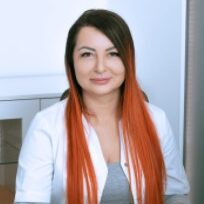
Monika Stomal-Słowińska, MD PhD
specialist in neurochirurgy
Monika Stomal-Slowinska, MD, graduated from the Silesian Medical Academy in Katowice in 1998. During her specialisation in neurosurgery she gained knowledge and improved her skills by participating in several trainings and courses abroad. Among others, she studied in Germany and Great Britain (London). In 2012, at the Medical University of Katowice, she was awarded the degree of Doctor of Medical Sciences for her thesis in neurosurgery. In 2015 she defended her PhD thesis in neuropsychology at the Faculty of Psychology, University of Warsaw. In the same year, she graduated with a degree in Aesthetic Medicine from the Medical College of Katowice, Poland, and a year later with a related degree in Anti-Aging Medicine from the International Center for Anti-Aging Medicine in Warsaw, a school under the auspices of the Society of Doctors of Aesthetic Dermatology (SLDE).
Monika Stomal-Slowinska, MD has many years of professional experience in the field of neurosurgery – she has been working in this field since her graduation.
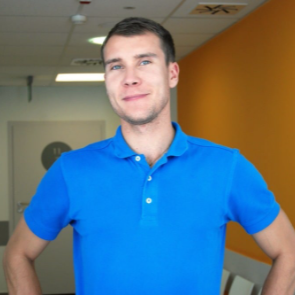
Bartosz Pańczyszak, Msc
physiotherapist
Manager of the rehabilitation facility at Vital Medic Hospital.
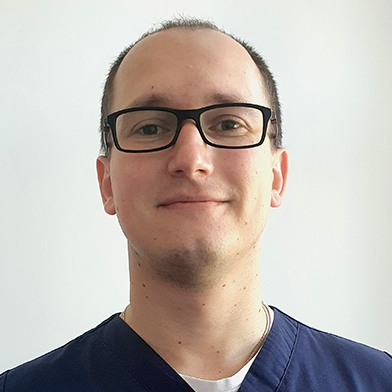
Mateusz Pawłowski, MD
specialist in neurosurgery
A graduate of the Faculty of Medicine in Zabrze, Silesian Medical University in Katowice. Participant of doctoral studies at the Medical University of Wroclaw. Doctoral student at the Medical University of Wroclaw.
Specializes in neurooncology, spine and hydrocephalus surgery. He has improved his knowledge and skills during numerous national and international courses.
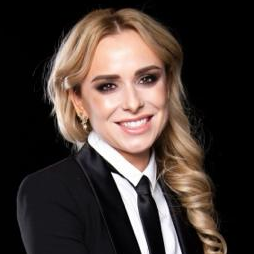
Olga Milczarek, MD PhD
specialist in neurology and pediatric neurology
Adiunkt Kliniki Neurochirurgii Dziecięcej Instytutu Pediatrii Uniwersytetu Jagiellońskiego Collegium Medicum w Krakowie, aktywny pracownik naukowo – dydaktyczny. Ukończyła specjalizację z neurologii w roku 2013. Staż specjalizacyjny z zakresu neurologii dziecięcej zrealizowała w Klinice Neurologii Dzieci i Młodzieży Instytutu Matki i Dziecka w Warszawie, a egzamin specjalizacyjny z zakresu neurologii dziecięcej złożyła w listopadzie 2021. Od wielu lat współpracuje z ośrodkami neurochirurgicznymi w całej Polsce jako neurofizjolog śródoperacyjny. Zajmuje się również neurochirurgią czynnościową (implantowanie stymulatorów nerwu błędnego, leczenie operacyjne padaczki, wykorzystanie głębokiej stymulacji mózgu -DBS). W trakcie zdobywania licencji z zakresu EEG – interpretuje badania dzieci i dorosłych. Autorka i współautorka licznych publikacji w czasopismach o zasięgu krajowym i międzynarodowym z zakresu neurochirurgii, neurologii, neurologii dziecięcej i neuropsychologii. Autorka wielu doniesień zjazdowych z konferencji krajowych i międzynarodowych. W obszarze zainteresowań znajduje się przede wszystkim leczenie padaczki, w tym lekoopornej u dzieci i dorosłych z wykorzystaniem nowoczesnych zdobyczy medycyny, w tym diety ketogennej i CBD, diagnoza zaburzeń rozwoju mowy, zaburzeń zachowania, problemów neurorozowjowych, leczenie skutków encefalopatii, urazów czaszkowo – mózgowych i bólów głowy.

